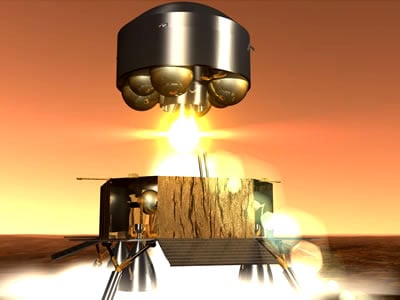[/caption] Future missions to Mars, including a sample return mission will be joint endeavors between NASA and the European Space Agency (ESA). NASA's associate administrator for space science Ed Weiler revealed in Thursday's Mars Science Laboratory
press conference
that the two space agencies agreed this week, based on initial discussions last July, to work together on future Mars missions. "This delay (of MSL) also means an opportunity of in the future having one Mars program for all the Earth," said Weiler.
"We have now gotten approval that in the future, NASA and ESA are going to work together to come up with a European-U.S. Mars architecture," Weiler said. "That is, missions won't be NASA missions, they won't be ESA missions, they will be joint missions. We need to work together. We'll never, ever do a sample return mission unless we work together. We both have the same goals scientifically, we want to get our science communities together and start laying out a plan. We've committed to working together to reaching those goals."
A robotic mission to collect soil and rock samples and return them to Earth for analysis would likely cost between $6 billion and $8 billion and not be feasible until the 2020s.
While many of the current missions are international efforts, with scientists from several countries contributing instruments and working together on research, this agreement would seemingly mean the two space agencies would share costs equally and encourage even more scientific collaboration. This is a logical next step for not only Mars exploration, but all future exploration of space.
For years, an international group of scientists, called the International Mars Exploration Working Group has been working together to form long term science goals and long range strategy for Mars exploration.
NASA has listed a sample return mission as "future goal" for years, and ESA has a Mars sample return mission planned as part of its Aurora exploration program, with such a mission slated for the 2020-2022 time frame.
 Universe Today
Universe Today
